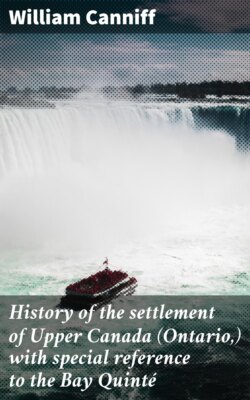Читать книгу History of the settlement of Upper Canada (Ontario,) with special reference to the Bay Quinté - William Canniff - Страница 13
На сайте Литреса книга снята с продажи.
NEW YORK.
ОглавлениеIn the year 1609 Hendrick Hudson, an Englishman, in the employ of Holland, first explored the great river running through New York State, which now bears his name. He, on behalf of the Dutch took possession of the country. Settlement first took place in 1614, and by 1620, a considerable colony was planted. The island of Manhatten, where now stands New York City, was honestly purchased of the Indians for twenty-four dollars. The village thus founded was called New Amsterdam, and the colony was designated New Netherlands.
Having been taken by the English in 1674, the name of the territory was changed to New York, after James, Duke of York, brother to Charles II. The first Legislative Assembly for this Province, met in New York, 17th October, 1683, just one hundred years before Upper Canada began to be settled.
The State of New York was not among the foremost in rebelling. The Dutch element which prevailed, was not given to change. Some of the most exciting events and battles of the war were enacted in this State. Right royally did the people take up arms against the rebels and drive Washington from Manhatten. Battalions and regiments were repeatedly raised and organized in this State. The valleys of the Mohawk and Hudson became historic grounds. Here was witnessed the ignoble failure of Burgoyne’s Campaign, which was the commencement of the decline of British power; and the City of New York was the last ground of the States occupied by British troops, until the war of 1813. New York furnished troops for the rebel cause, in 1775, 2,075; in 1776, 3,629; and subsequently 12,077.
Of all the States, New York gave the largest number of pioneers to Upper Canada.
